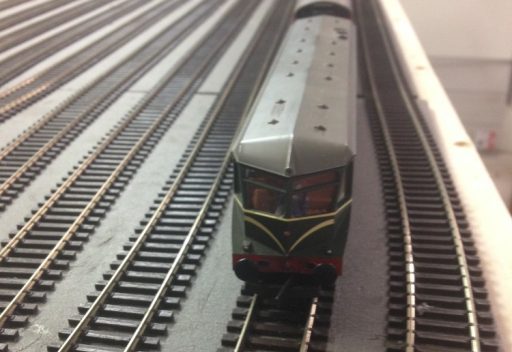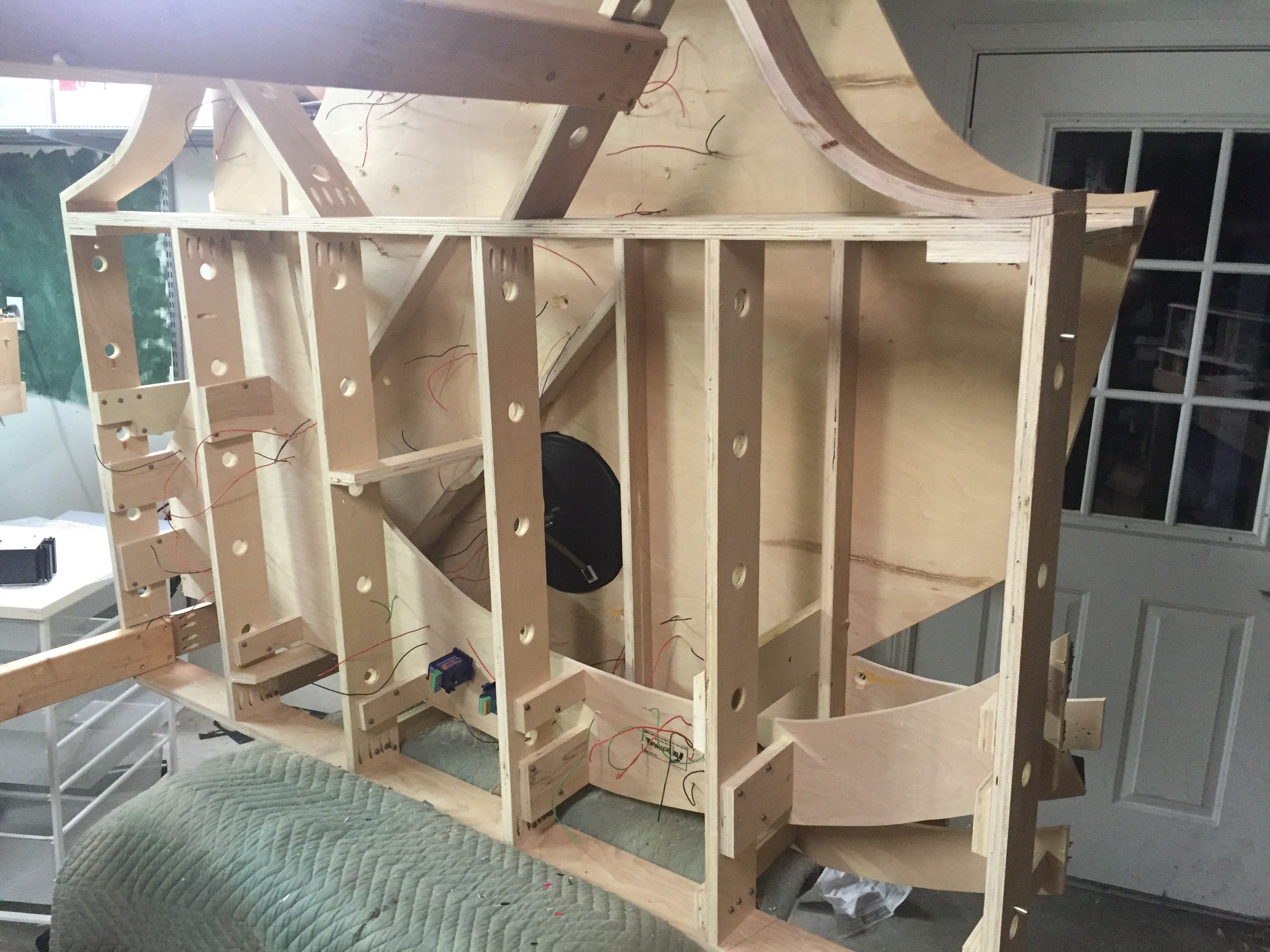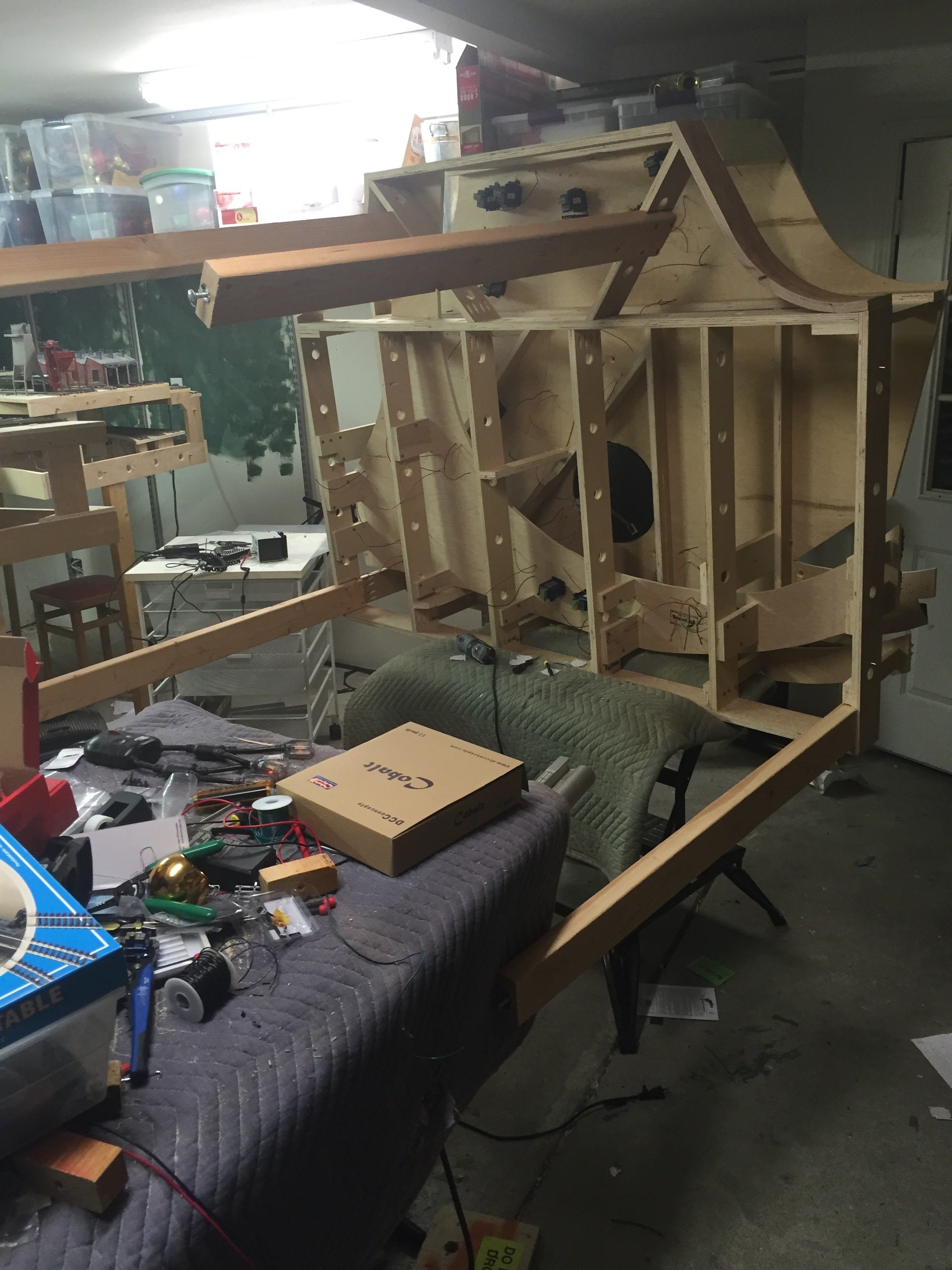I thought I should document how the wiring process is done. The most important thing is that it is not done from beneath the layout. The sections of baseboard are inclined to between about 80 and 110 degrees in my Workmate portable bench protected by a triple layer of moving blanket, using one of the legs as a prop. Then the wiring can take place in an almost vertical plane.
The worst of it is wiring the upper deck of a twin-level section. In these areas there may be point motors – and inserting a wire into a point motor in a confined space is just not fun. To ease this we will use guile – and minimize the work to be done in between the boards by wiring the point motors first before sticking them in position – and we will use longer leads to ensure the bus connections remain visible in the areas without a lower deck.
My Cobalt point motors are now always installed with the actuator lever left long. I have discovered that the process of trying to refit a motor with its trimmed actuator in place is just too frustrating – especially on double-slips!! Plenty of new words! Much easier to just have some spare actuators.
- Glue down track so it wont move
- Semi-invert module
- Check all point motor holes for fit, counter-sinking and carefully Dremeling as needed to get free movement (use a metal ruler as a barrier to prevent any “oops” moments
- Physically install any circuit boards – BlocD8, PSX, Juicers, etc
- Install point motors which are visible
- Wire up accessory bus using bus tags
- Attach point motors and BlocD8 power supply to accessory bus (3 or 4 per tag)
- Test point motors
- Install point motors in difficult locations
- Wire up track bus using bus tags.
- Attach droppers and PSX and Juicers to track bus
- Attach track circuit droppers to “spare” terminal on bus tags
- Wire up track circuits.
- Put board upright, clip actuators and test
This whole process takes about two weeks for a large module – given maybe 3hrs a session, 3 or 4 sessions a week. This is because
- Every point motor has 5 connections (two power, two track power, one frog).
- Every point has three droppers (main plus frog).
- Every piece of track has two droppers.
- Every Bus Tag has 6 solder joints but can take 3 “customers”.
So in total a Board module with 18 motors/points, 36 pieces of track and 8 track circuits = ~250 solder joints, 232 individual pieces of wire with 464 wire-stripper operations! And remember – this is “simple wiring” DCC and we haven’t added any signals yet!!
I have 11 modules (two are true double decked so 13 pieces) to do and I am now on module 6 aka “the big one”… Maybe by Thanksgiving…



